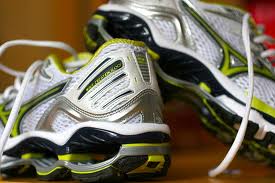While the factors contributing to obesity and weight change are extremely complex, it is a truth that an increase in body weight is the result of a higher caloric intake compared to caloric expenditure (ie calories in is more than calories out). One major risk factor for obesity appears to be our individual tendency to engage in NEAT ('non exercise activity thermogenesis'), and by making changes to one's NEATness, one may find themselves a giant NEAT leap ahead in the struggle against the bulge.
Calories Out (ie, caloric expenditure) is made up by the following constituents:
- Basal Metabolic Rate: This is your baseline metabolism at rest, and comprises about 60% of total daily calorie burn in a relatively sendentary person. It is determined primarily by your body size and body composition - in particular, your fat free (lean) body mass (as muscle, which is lean, is more metabolically active than fat).
- Thermic Effect of Food: This refers to the calories burned by the process of digestion of food, and is responsible for about 10% of your total day's calorie burn. This varies a little depending on what you eat, as protein takes about 25% more energy to digest than carbs or fat.
- Activity Thermogenesis: These are the calories you burn by moving around.
Activity Thermogenesis is further broken down into:
- Exercise thermogenesis (from purposeful exercise: playing hockey, going to the gym, etc); and
- Non Exercise Activity Thermogenesis (N.E.A.T. - there it is!). NEAT refers to any calories burned by moving around during the day that is not related to focused exercise: this can be walking to work, moving around at the office, doing chores at home, painting a fence, playing a piano, etc.
As most people around the world do not specifically exercise, and because those that do exercise typically engage no more than a couple of hours per week, NEAT is far and away the greatest component of the total number of calories that we burn by moving around.
If we look at the explosion in obesity around the world in the last century or so, we can see that there has been a parallel decrease in our daily NEAT activities. We have become a society that can shop online, drive to work, and purchase a
self powered vacuum to clean up the crumbs around the couch from last night's TV marathon. We have also become a society that is much more efficient in the workplace, with machines that do much of our manual labor for us, technology that allows transfer of information in an instant rather than by hand, and workplaces moved to the home as there is often no longer a reason to physically relocate oneself to an office on a daily basis. Unfortunately, this caloric 'efficiency' has taken a toll on our health as a society, making it all too easy to pack on extra pounds from the larger portion sizes and unhealthy choices that plague our marketplace.
Add to this another level of complexity: genetics. As suggested by JA Levine, an authority on the topic of NEAT from the Endocrine Research Unit at the Mayo Clinic, it may be some of us are genetically endowed to be NEAT activators (who would have gone out to hunt in the face of famine in the 'olden days'), while others are NEAT conservers (who would tend to lay low, conserve energy, and weather out the famine until food became more plentiful again). In modern day, a NEAT activator may be a person who is more likely to fidget, or may choose the stairs instead of the escalator; a NEAT conserver may be genetically more inclined to sit at their desk rather than stand, or may choose to drive to work rather than ride a bike in the interests of time (though the transportation issue is clearly much more complex and often environmentally determined -
read more here).
So, how can we increase our NEATness? As proposed by Dr Levine, try the STRIPE approach:
S: SELECT a NEAT-activity that you enjoy and start it (walking to work, standing while talking on the phone, going dancing rather than to a movie);
T: TARGET specific goals for your NEAT activity and follow through on them
R: REWARD yourself for reaching your identified goal (eg treat yourself to a new song on iTunes to listen to after your first month of walking to work)
I: IDENTIFY barriers & remove them (eg go to the mall to walk and talk with a friend if it gets too cold to walk outside);
P: PLAN NEAT-activity sessions,
E: EVALUATE yourself: have you stuck to your plan, and has it been effective in reaching your goals?
When you choose your NEAT activities, be sure that they are activities that you enjoy! Make moving fun. :D
Thanks to my friend and Danish research colleague Mads Rosenkilde for the inspiration to write this blog, and for the heads' up on a great
review article by Dr Levine.
Dr Sue
www.drsue.ca © 2012 drsuetalks@gmail.com
Follow me on Twitter for daily tips! @drsuepedersen
Read more...





